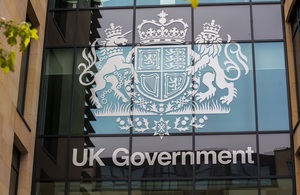November Labour Market Statistics for Scotland
Unemployment in Scotland rose by 5,000, to 215,000 between July and September 2011

Unemployment in Scotland rose by 5,000, to 215,000 in the period July to September 2011, according to Office for National Statistics (ONS) data released today. The Scottish unemployment rate is 8.0 per cent, below the UK average of 8.3 per cent.
The labour market statistics also show employment in Scotland has decreased by 28,000 over the three months to July - September 2011. The number of those in employment in Scotland now stands at 2,478,000.
The Secretary of State for Scotland Michael Moore said:
“The Scottish unemployment figures are a stark reminder we cannot allow any let up in our efforts to get the economy back to full health and people back into work as soon as possible. Each of these numbers represents an individual or a family directly affected by the economic downturn and the UK Government is doing all it can to create growth and reverse this trend.
“The urgency of protecting the UK economy has never been clearer as we witness events in the Eurozone. It is essential that we keep working towards securing strong and sustainable growth for the long term.
“Youth unemployment is a specific concern and I will meet labour market and employment and skills experts next week to look at the issue in depth. That will help shape the objectives of Scotland’s first national youth convention I have organised for March next year, which follows on from a series of seminars across Scotland. These have brought together Council leaders, employers, UK and Scottish Government agencies and local providers to work harder and better for the benefit of jobless young Scots. “
- Employment in Scotland fell by 28,000 over the quarter, and increased by 14,000 over the year to stand at 2,478,000.
- The Scots employment rate fell over the quarter to 71.2 per cent. The rate is above the UK average of 70.2 per cent.
- Unemployment in Scotland increased by 5,000 over the quarter and fell by 14,000 over the year. The level now stands at 215,000.
- At 8.0 per cent, the Scots unemployment rate is just below the UK rate as a whole which stands at 8.3%.
- Economic Activity fell by 23,000 over the quarter and now stands at 2,693,000. The Economic Activity rate fell by 0.5 per cent over the quarter, and stands at 77.5 per cent.
- In October 2011, the number of people out of work and claiming Jobseeker¿s Allowance (JSA) was 143,700.
The Labour Force Survey (LFS) indicates that the number of people in employment in Scotland from July to September 2011 was 2,478,000. Employment was down by 28,000 compared to the previous three months, and up by 14,000 compared to the same period last year. The employment rate was down on the previous quarter by 0.7 per cent, and increased 0.5 per cent over the year, to 71.2 per cent. In comparison, the Scottish employment rate is above the UK average.
Unemployment in Scotland was up 5,000 over the quarter July to September 2011, to 215,000. The level was down 14,000 compared to the same quarter last year. The unemployment rate was up by 0.3 p.p. on the previous quarter at 8.0 per cent, which is down 0.5 p.p. over the year.
The claimant count in Scotland, based on the seasonally adjusted number of people claiming Job Seeker’s Allowance (JSA), decreased by 900 from September to 143,700 in October 2011. The level is up by 8,300 on October 2010. The claimant count rate remained unchanged over the month at 5.4 per cent, and up by 0.3 p.p. over the year.
The number of economically active (defined as those in employment or ILO unemployed, and seasonally adjusted) in Scotland in the July to September 2011 quarter was 2,693,000. This was down 23,000 on the previous quarter, and remains unchanged on the same point a year ago. Among those aged 16-64 the economic activity rate was 77.5 per cent, down 0.5 p.p. on the previous quarter, and up 0.1 p.p. over the year.